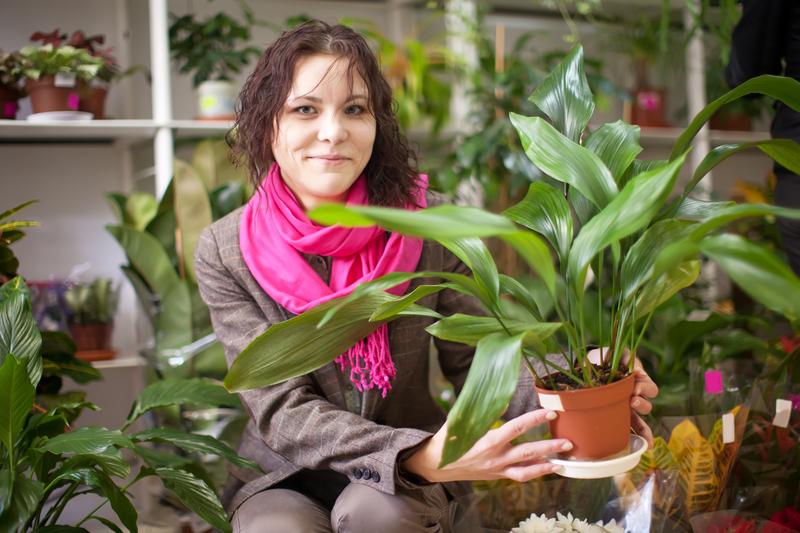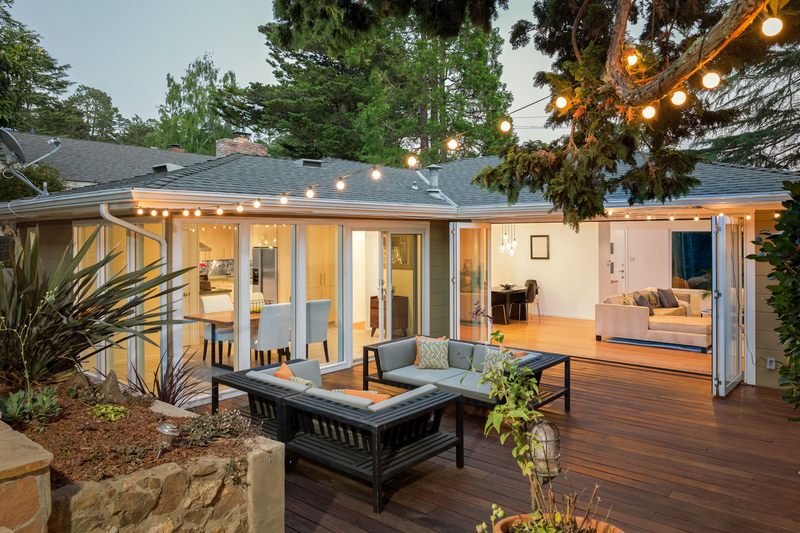Evergreen Climbers for Shade: Breathing Greens in Shade
Posted on 11/06/2025
Evergreen Climbers for Shade: Breathing Greens in Shade
Transform shaded corners into verdant escapes with evergreen climbers for shade. If your garden is blessed with cool, shaded patches, or urban architecture deprives your walls and fences of direct sunlight, don't despair! You can still enjoy vibrant, breathing greenery all year round. Explore how the right climbers not only bring aesthetic value to the shade but also purify the air, offer privacy, and support local wildlife. This comprehensive guide covers top choices, planting tips, and maintenance advice for thriving shady gardens.
Why Choose Evergreen Climbers for Shade?
Evergreen climbers are a brilliant choice for shaded or north-facing gardens, courtyards, and balconies. Unlike deciduous climbers, these steadfast plants retain their foliage throughout the year, providing consistent coverage and color, even in winter's dullness.
- Year-round interest: Maintain lush green walls, fences, or pergolas in every season.
- Improved air quality: Lush climbers act as natural air filters, breathing out oxygen and storing carbon dioxide.
- Wildlife support: Offer shelter for birds and insects, enhancing biodiversity.
- Low maintenance: Many climbers for shade require only occasional pruning and light feeding.
- Versatility: Perfect for covering unsightly walls, creating privacy, or softening structural lines in urban landscapes.

Best Evergreen Climbing Plants for Shade
Not all climbing plants thrive in low-light environments. Some, like roses and wisteria, demand full sun. But worry not--here's a list of shade-loving climbing plants that are truly evergreen and easy to grow. Let's delve into the most stunning and reliable options.
1. Hedera helix (English Ivy)
- Light: Deep to partial shade
- Features: Fast-growing, deeply lobed dark green leaves
- Benefits: Tolerant of urban pollution, drought-resilient once established
English Ivy is the archetype of evergreen climbers for shade. It rapidly covers fences, trellises, and even the ground. Select from many leaf forms, or variegations for visual variety. Prune regularly to keep it tidy, as it can become invasive if unchecked.
2. Trachelospermum jasminoides (Star Jasmine or Confederate Jasmine)
- Light: Adaptable; thrives in partial to deep shade
- Features: Glossy leaves, starry white fragrant flowers in midsummer
- Benefits: Scented blooms, winter-hardy in mild climates
Star Jasmine is a versatile evergreen vine for shade that brings fragrance and beauty to dark spots. The leaves sometimes turn bronzy-red in winter for added interest. Great for training on walls and arches.
3. Lonicera henryi (Henry's Honeysuckle)
- Light: Semi to full shade
- Features: Lance-shaped leaves, yellowish to red flowers in summer
- Benefits: Attractive berries, tolerant of most soils
Not all honeysuckles are evergreen, but Henry's Honeysuckle offers lush foliage year-round. The flowers feed pollinators, and it makes a superb screen for shaded corners.
4. Euonymus fortunei 'Silver Queen'
- Light: Partial to deep shade
- Features: Variegated green and silver-cream leaves
- Benefits: Thrives as a climber or ground cover; low-maintenance
This adaptable shade-loving climber can be left to trail or trained up a support. The silver-tinged leaves add brightness to dark places.
5. Clematis armandii
- Light: Partial shade
- Features: Long, glossy leaves; star-shaped scented white flowers in early spring
- Benefits: Rapid cover, early blooms, supports local bees
Clematis armandii is a perfect big-leafed evergreen climbing plant for shaded gardens. It's spectacular over garden entrances and pergolas.
6. Pyracantha (Firethorn)
- Light: Tolerates full shade to partial sun
- Features: Spiky branches, dark green foliage, brilliant berries in autumn and winter
- Benefits: Provides nesting sites and food for birds
Firethorn is often used as a wall shrub but is highly effective as a climbing evergreen in shaded spots, especially for wildlife-friendly gardens.
7. Passiflora caerulea (Blue Passion Flower)
- Light: Part shade
- Features: Exotic blue flowers, dark green leaves
- Benefits: Fast-growing, intriguing flowers attract bees
This stunning climber tolerates more shade than you might expect. It remains green year-round in milder regions, though may lose some foliage in harsher winters.
How to Plant and Care for Evergreen Climbers in Shade
To achieve lush, breathing greens in shade, successful planting and maintenance matter as much as plant selection. Here are key considerations for establishing evergreen climbers for shade:
- Soil Preparation: Amend soil with compost or leaf mold for improved drainage and fertility.
- Plant at the Right Depth: Set new climbers at the same depth as in their pots. Avoid burying stems too deep.
- Watering: Shaded sites retain more moisture, but new plants need consistent watering until well rooted.
- Mulching: Apply an organic mulch to suppress weeds and maintain even soil temperature.
- Support Structures: Install trellises, wires, or mesh to guide and support upward growth. Some climbers self-cling, while others need tying in.
- Feeding: In spring, a slow-release fertilizer boosts growth, especially on poor soils.
- Pruning: Prune annually to control shape, remove dead wood, and promote bushy growth. Check plant-specific needs.
Design Ideas: Bringing Shade to Life with Evergreen Vines
Evergreen vines for shade are incredibly versatile in the landscape. Here are top design tips for using climbers to create year-round sanctuary:
- Softening hard surfaces: Trail ivy or climbing euonymus over unsightly brick walls or garages to create a leafy backdrop.
- Creating living screens: Use star jasmine or honeysuckle along fences to provide all-year privacy and lushness.
- Natural archways: Train fragrant clematis over a garden arch to welcome guests with both scent and spectacle, even in the shade.
- Vertical gardens and trellises: Grow a combination of different evergreen climbers adapted for shade for multi-textured green walls.
- Wildlife havens: Choose berry-producing climbers like firethorn to invite birds into the garden all winter.
- Shady patios & balconies: Use potted climbers with obelisks for easy maintenance and moveable greenery.
Benefits of Having Evergreen Cover in Shady Gardens
There's more to evergreen climbers for shade than mere appearance. Let's explore the many practical and ecological advantages:
- Breathe cleaner air: Climbing plants filter airborne pollutants and lower dust levels, improving air quality both indoors and out.
- Enhance biodiversity: Provide essential habitat for insects, birds, and even small mammals seeking shelter in evergreen foliage.
- Conserve energy: Leafy climbers insulate homes, reducing heating and cooling costs by acting as a living barrier against wind and sun.
- Reduce noise: Dense, green walls muffle urban noise and create peaceful nooks for reflection.
- Low-maintenance luxury: Once established, most shade-tolerant evergreen climbers need only minimal input for maximum effect.
Common Questions about Evergreen Climbers for Shade
Can you grow climbers in deep shade?
*Many evergreen climbers are adapted to cope with less light.* While full shade inhibits flowering, you'll still get dense, healthy foliage from species like English ivy, some euonymus, and climbing hydrangea. Always check the specific plant's label for its light tolerance.
Do evergreen climbers need to be watered in shade?
Newly planted climbers need regular watering to establish. Once mature, most become quite drought-resistant, especially with an annual layer of mulch. Monitor containers more closely, as they dry out faster even in shaded spots.
What is the fastest-growing evergreen climber for shaded areas?
English ivy is the fastest. For those wishing to balance coverage speed with control and design, consider Star Jasmine or Clematis armandii, which provide lush foliage within a couple of seasons.
Are there evergreen flowering climbers that tolerate shade?
*Yes.* Star Jasmine, Henry's Honeysuckle, Passiflora caerulea, and Clematis armandii all produce flowers in shadier conditions--though the more light they receive, the more they'll bloom. For maximum flowers, try situating in dappled shade.
How do I control climbers from becoming invasive?
- Regular pruning: Set a yearly schedule to cut back runaway growth.
- Physical barriers: Install root barriers or train on isolated supports to limit spread.
- Choose non-invasive species: Avoid problematic species in your region; ivy is robust but controllable with routine attention.

Expert Tips for Thriving Evergreen Climbers in Shade
- Mix textures and colors: Combine variegated and plain-leafed climbers for all-season interest.
- Layer plants: Use groundcover evergreens beneath vertical climbers for a truly lush shade garden effect.
- Monitor for pests: Shady, sheltered spots may attract slugs or fungal diseases. Inspect frequently and act at first sign of trouble.
- Fertilize sparingly: Excess fertilizer creates leafy but floppy growth; use organic compost or feed in moderation.
- Encourage vertical growth: Tie new shoots to supports early, guiding them toward light where possible.
Conclusion: Breathe Life into the Shade
Don't let shady spaces become neglected corners. Evergreen shade climbers offer a solution that is both beautiful and practical. They breathe greens into the dimmest spots, providing privacy, color, and a living tapestry for every season. With purposeful plant selection, thoughtful care, and a dash of creativity, you can transform your shady garden into a lush retreat full of life. Start planting today and enjoy the benefits of vibrant, year-round greenery in every corner of your landscape!

